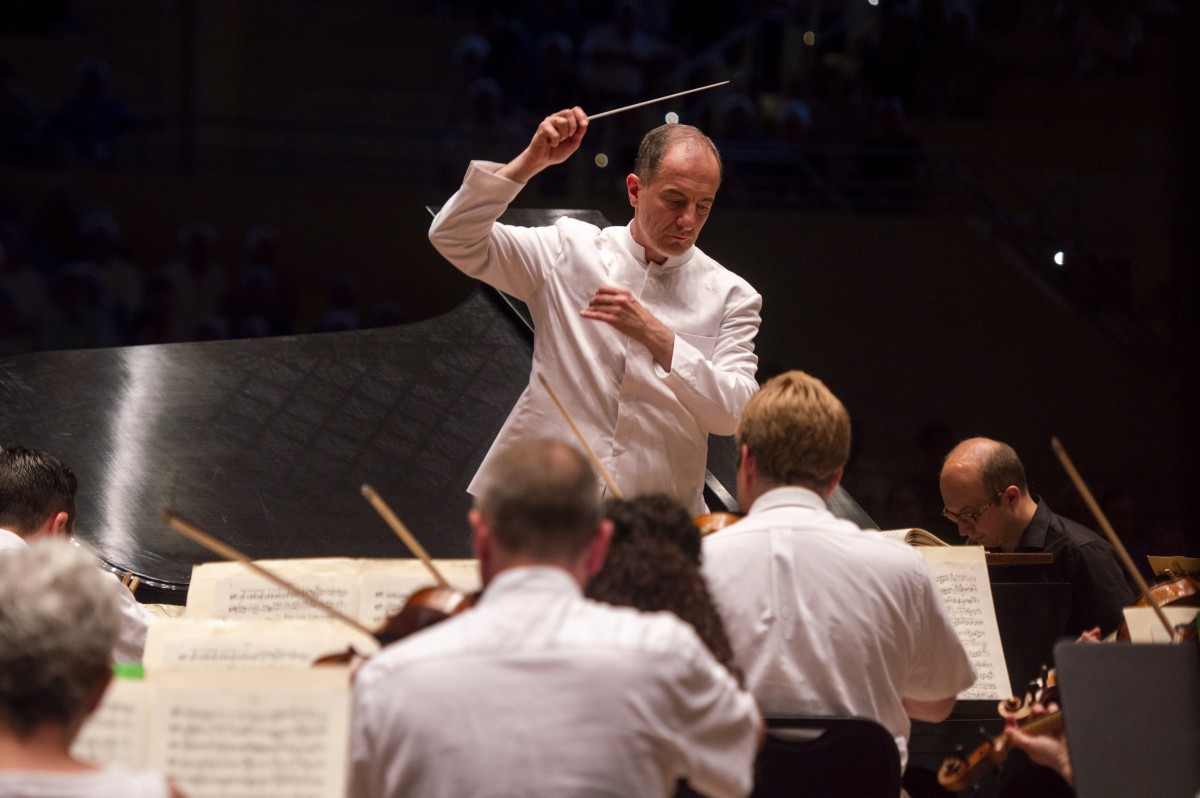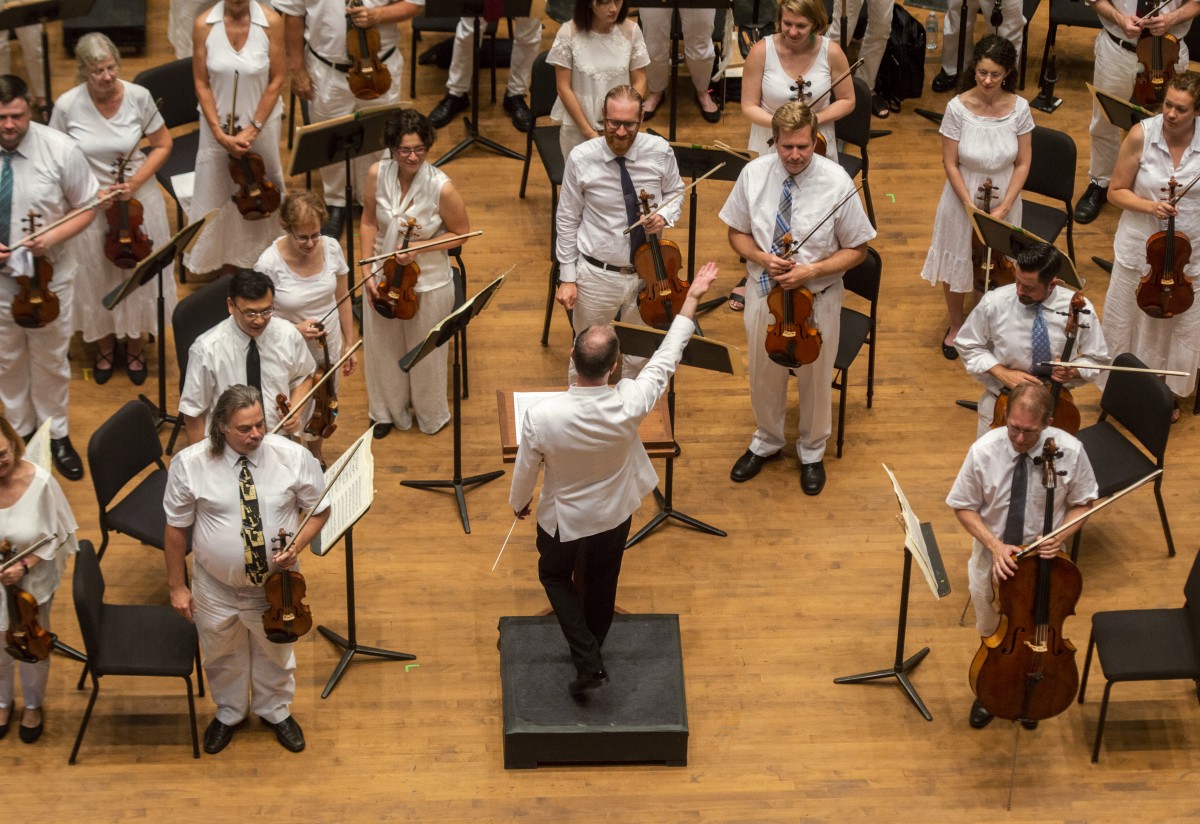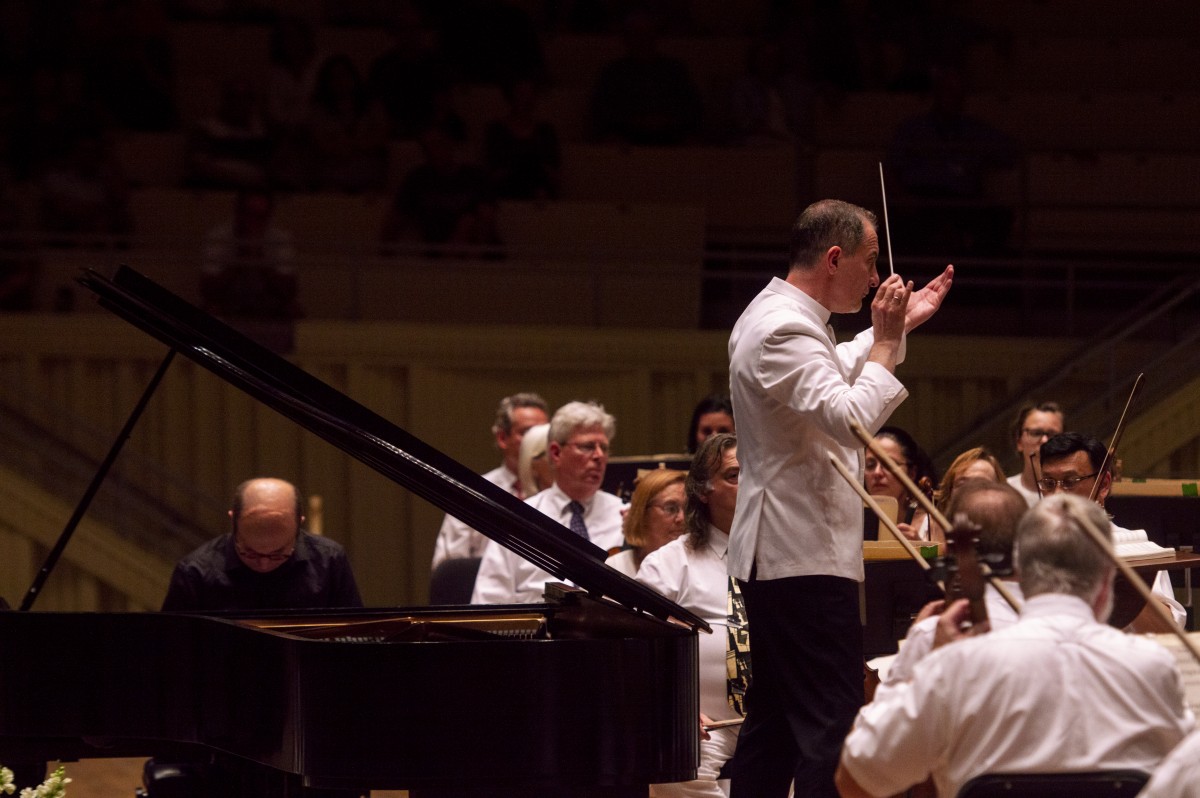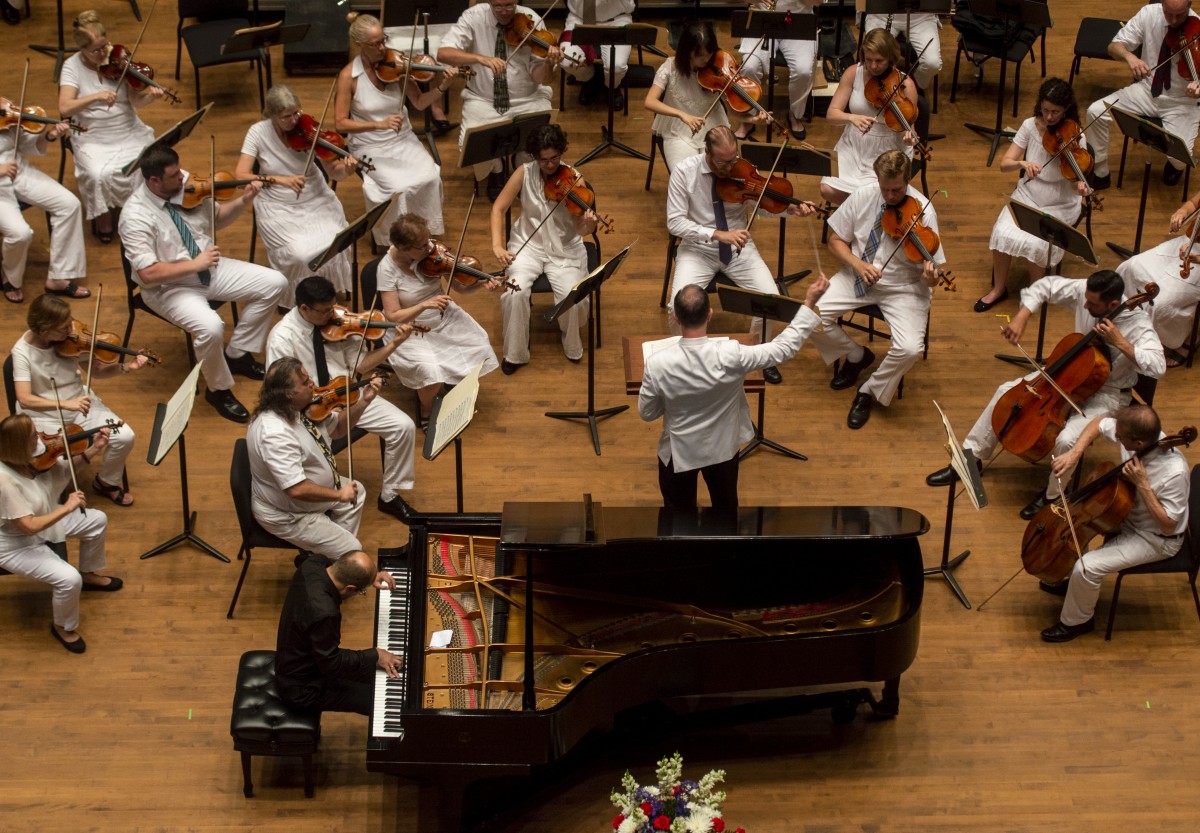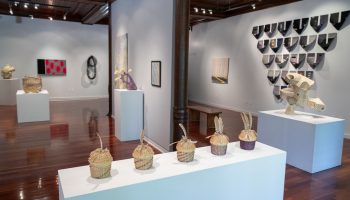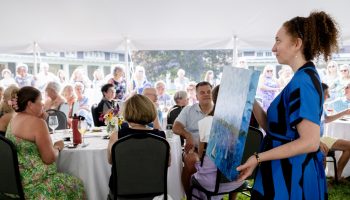Review by Christopher Gibbs-
Three long threads were woven into the Chautauqua Symphony Orchestra concert Tuesday evening. The first is called “Into the Music/After the Music,” intermission-less programs after which the audience is invited to ask questions of Music Director Rossen Milanov. The second: several concerts this summer featuring Russian music, in this instance Sergei Rachmaninoff’s Piano Concerto No. 1. Finally, there is the ongoing collaboration of the CSO with the remarkable pianist Alexander Gavrylyuk, who is appearing for his 14th consecutive summer at Chautauqua.
The briefer programming format has several advantages. Audiences evidently enjoy that some concerts are given without an intermission, while welcoming the chance to linger afterward for a discussion that helps to build bridges between listeners and performers. More practically, most CSO concerts are prepared with just one rehearsal. This used to be the standard procedure for every CSO concert until a few decades ago, when the total number of season performances was slightly reduced and the number of rehearsals somewhat increased.
But most concerts are still presented with limited rehearsal time, which demands the conductor’s efficient preparation and the orchestra’s adept professionalism. The fine results speak for themselves, but it all requires strategic planning. A program like the one on Tuesday, with just two works totaling some 45 minutes of music, benefits from having a bit more time to rehearse, especially when it includes an often tricky and relatively rarely performed piece like the Rachmaninoff concerto.
Milanov’s care was immediately evident with the opening work, the far more commonly heard Prelude and Liebestod from Richard Wagner’s Tristan and Isolde, which he led in an uncommonly subtle performance. This is a piece that changed music history (two weeks from now we will get to hear another game changer when the Music School Festival Orchestra joins the CSO for Stravinsky’s “The Rite of Spring”).
The opera’s plot revolves around the doomed love of the title characters, as Isolde is betrothed to Tristan’s much older uncle, King Marke. One of Wagner’s brilliant achievements in this opera was finding a musical analogue to the lover’s unfulfilled erotic passion. The first chord in the Prelude — the “Tristan Chord,” perhaps the most discussed and famous in all of Western music — is unresolved according to the traditional rules of tonal harmony (the Rolling Stones would say it gets “no satisfaction”). Wagner immediately repeats it, again without resolving the dissonance. And then does so again and again — for nearly five hours. The effect is astonishing. The chord is finally resolved only at the very end, when Tristan and Isolde are both dead.
What we heard Tuesday gave us the beginning and end of the opera, skipping the many hours in between. Milanov chose a relatively fast tempo for the opening, one that I think serves the music well, unlike some conductors who drag things out, supposedly for greater profundity. The pacing over the course of work was totally convincing and built to effective, blossoming climaxes that wonderfully captured the sweep of this intoxicating score.
Midway through, there is a quick splice that transports us to the end of the opera. This is when Isolde, standing over the body of her dead lover, sings her “Transfiguration,” which because of a piano transcription by Wagner’s father-in-law, Franz Liszt, became more popularly known as the “Liebestod” or “Love Death.” In the opera, the music of this some 7-minute-long section largely repeats that of the great second-act love duet before the lovers are discovered, but orchestras often perform the excerpt purely instrumentally.
Gavrylyuk’s special bond with Chautauqua has led to his return each summer for performances with the CSO, recitals and chamber music, master classes and a more recent position as artist-in-residence and artistic adviser to the School of Music’s Piano Program. There is clearly a commitment on both sides that continues even as his international recognition and career justifiably skyrocket.
This summer displayed another type of loyalty and flexibility. Daniil Trifonov, a terrific pianist who performed with the CSO some years ago, was supposed to play Scriabin’s Piano Concerto on the season’s opening concert, but had to cancel. Gavrylyuk graciously stepped in to perform Rachmaninoff’s “Rhapsody on a Theme of Paganini.” In turn, he switched his originally scheduled performance for Tuesday of Brahms’ First Concerto to Rachmaninoff’s First.
I will gladly hear Gavrylyuk play anything, but he is a Rachmaninoff specialist, so it is a particular pleasure that Chautauquans in short succession got to hear him perform two of the composer’s five works for piano and orchestra. While he has recorded all of Sergei Prokofiev’s piano concertos, and some of Rachmaninoff’s solo keyboard music, Gavrylyuk has not yet recorded the concertos (his widely praised performance of the Third Concerto at the BBC Proms concerts in 2017 can be viewed on YouTube, and is simply extraordinary).
Chances to hear Rachmaninoff’s Piano Concerto No. 1 are relatively rare, especially in comparison with the composer’s much more familiar second and third concertos and Paganini Rhapsody (his fourth concerto is the unjustly ignored ugly duckling). Although he composed a fair amount of juvenilia, Rachmaninoff decided that the First Piano Concerto should be presented as the official Opus 1. The 17-year-old began composing the work in the summer of 1890, and premiered its first movement in 1892. A few years later he published the concerto in a two-piano version, but cooled on the piece, which he stopped playing until he could get around to revising it.
By his mid-30s, Rachmaninoff was an internationally famous composer, particularly after the success of the second and third concertos (1901 and 1909). It was not until 1917, just before he left Russia in the wake of the Revolution to live permanently in the West, that he returned to his youthful effort. The revisions involved a thinning out of the orchestration, making some structural modifications, writing a new cadenza for the opening movement, and considerable recasting of the finale. He gave the first performance of the new version in 1919, at Carnegie Hall.
Despite the revisions, the First Concerto still sounds like the Rachmaninoff whose music audiences so embraced, chronologically situated, as it is, both before and after its phenomenally famous siblings and dazzling Second Symphony. Since the original version of the concerto survives we know that the revision remains close to what the teenage Rachmaninoff initially composed.
Gavrylyuk brought to his performance his usual thrilling technical wizardry, but also the large-scale drama that makes his Rachmaninoff so special. Milanov and the CSO were perfect partners in this drama and adeptly handled the tricky metrical challenges of the final movement. Audiences can look forward to this fabulous pianist’s recital in the Amphitheater next week.
Christopher H. Gibbs is the James H. Ottaway Jr. Professor of Music at Bard College, artistic director of the Bard Music Festival, executive editor of The Musical Quarterly and program annotator for The Philadelphia Orchestra. His books include The Life of Schubert, which has been translated into six languages, and the College Edition of The Oxford History of Western Music, co-authored with Richard Taruskin.


